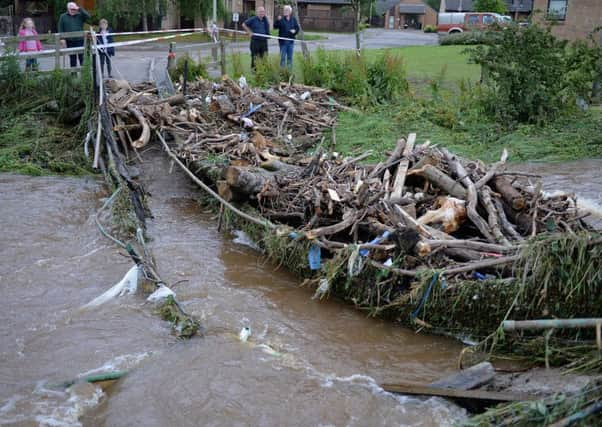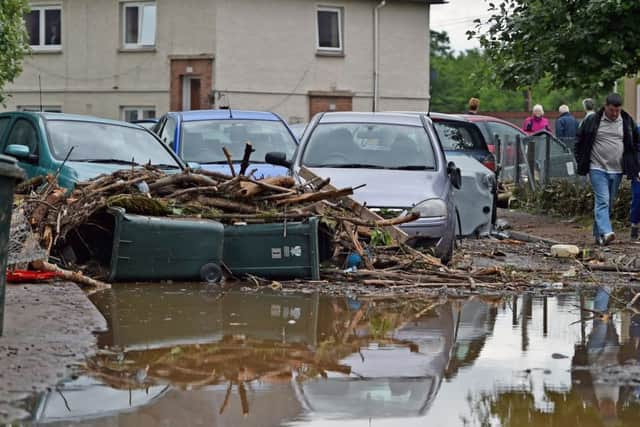Residents blame Beavers for flash floods in Alyth


Residents in Alyth, Perthshire, believe the animals built dams upstream, which were swept downstream by torrential rain on Friday.
They say some of the debris washed through the village showed clear signs of having been chewed by the rodents.
Advertisement
Hide AdAdvertisement
Hide AdAlex Stoddart, director of the Scottish Association for Country Sports (SACS), said several members had reported seeing wood in the Alyth burn which bore tooth marks from beavers.


He said: “We have been told by residents that there are clear beaver marks. We are concerned by reports from local residents and members affected by the flooding, that beaver lodge material may have been an exacerbating factor.
“From our knowledge of Canada and Europe, beavers can have an effect on flooding but if they had an effect on Alyth is not known.
“Beavers are spreading throughout Scotland and, as much as they can have environmental benefits, they now play an increasing, but largely unknown role in local flood and water catchment management.
“The issue for us is not the beavers themselves, but whether local residents have been fully consulted about a reintroduction, and the legality of unlicensed species reintroduction.”
Residents have also claimed that felled trees that were left lying to encourage biodiversity also aggravated the flooding.
But beaver supporters rejected claims that material from dams upstream of the town were brought down by the torrential rain.
Paul Ramsay, who owns the Bamff estate where some beavers live, said: “There could conceivably have been a twig or two that had come from beavers, I wouldn’t deny that was a possibility, but the catchment area of the Alyth burn covers about 36sq km.
“The contribution from Bamff to that is tiny.
Advertisement
Hide AdAdvertisement
Hide Ad“As for the debris, as the water flowed down through the Den of Alyth it picked up an enormous amount of wood. It is exaggerated out of all proportion.”
Local councillor Dennis Melloy praised the community spirit following the flooding, but said more should have been done by Perth and Kinross Council after the initial rescue work.
He said: “I can’t fault the council for their excellent initial response to this unexpected emergency.
“The roads department, housing and health and Tayside Contracts were all magnificent with staff working 12 hours in a very difficult and dangerous environment.
“However, no official council facility was set up in the town hall to co-ordinate the various local volunteers who were making decisions for worried residents asking for advice or help. This should have been in place immediately, as soon as an emergency situation was identified.”
Council leader Ian Miller said: “Having been on the ground myself every day since the flood occurred, I have witnessed first hand the tremendous efforts made by the community and all agencies, including the council.”
Mr Miller said there were more than 60 council staff on duty and deployed to the town.
Local MSP Murdo Fraser said: “Whilst the priority must be help for those who need it, we do need to look at whether there were any steps that could have been taken to minimise the impact.” He called for an investigation into the cause of the flood.